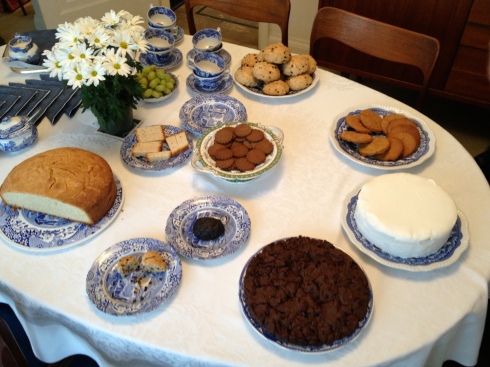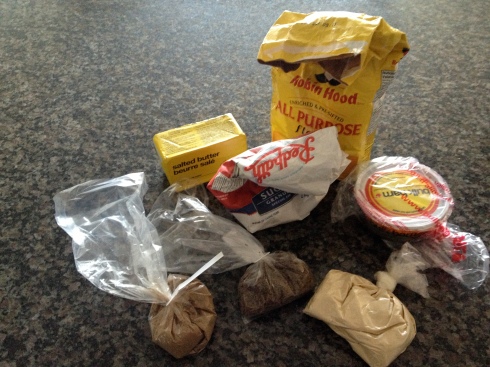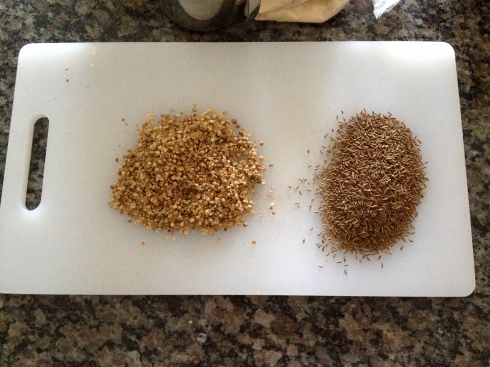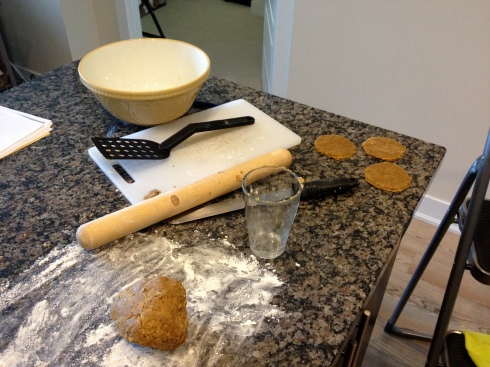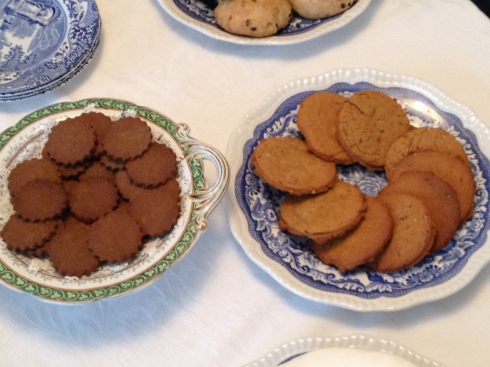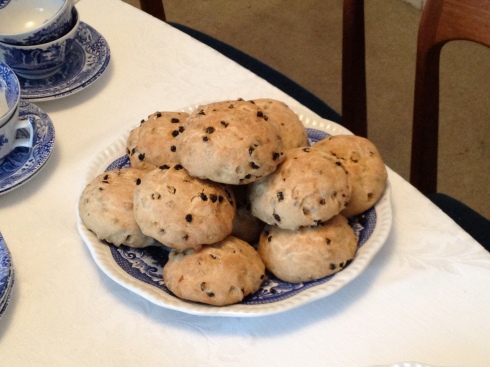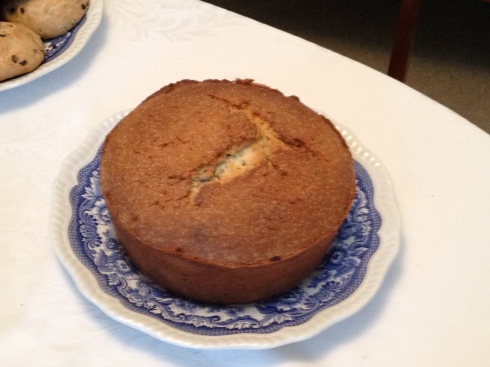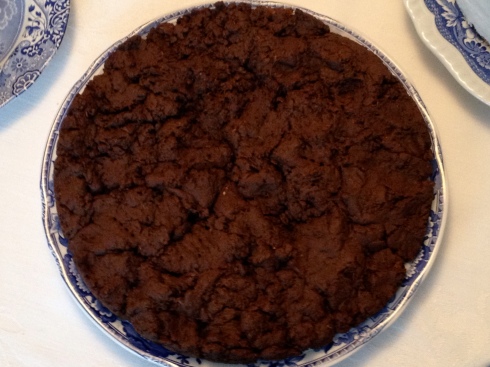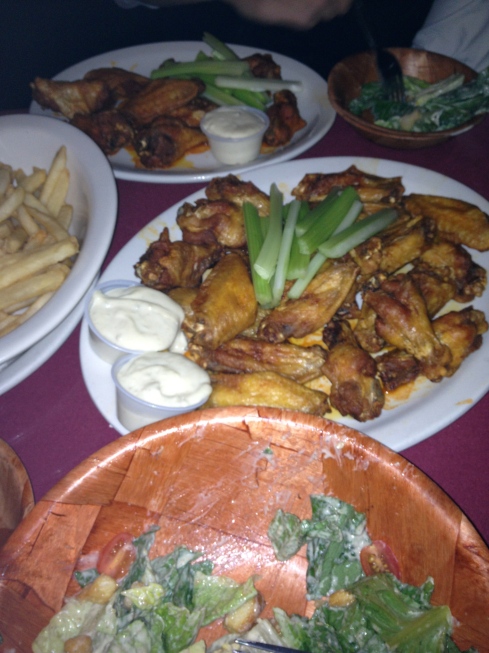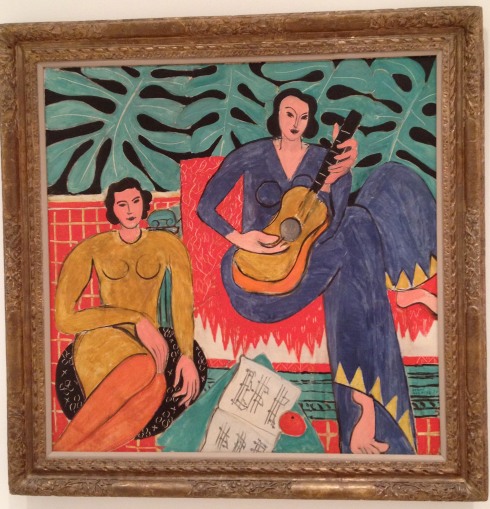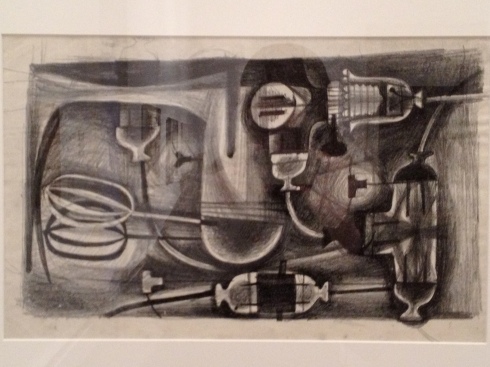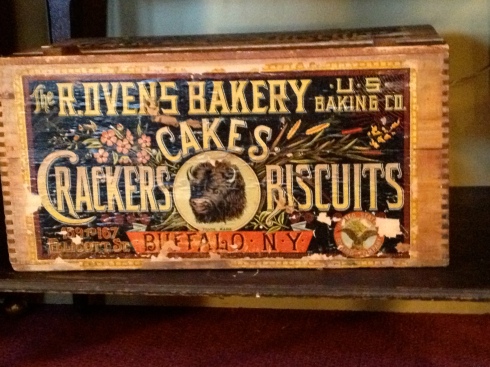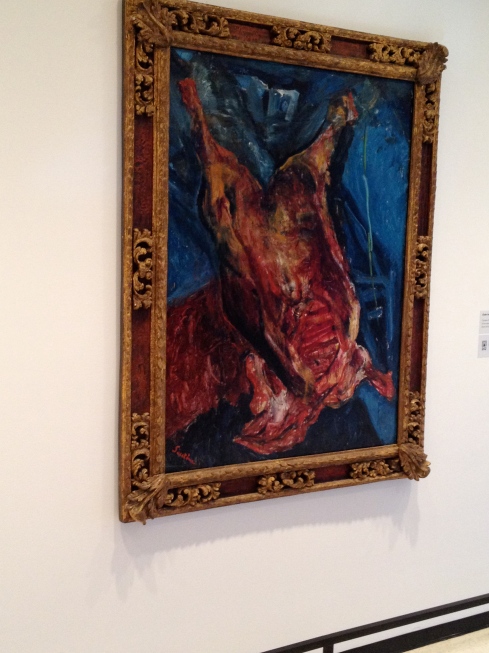a sample of cakes and biscuits baked from Elizabeth Marshall’s Young Ladies’ Guide; it includes Amy’s beautifully iced rice cake on the far right and Mya’s almond cake on the far left
Over the last few months some of the Toronto historic cooks have been meeting up to sample each others attempts at recreating recipes from various 18th and 19th century cookbooks. The sessions have been generously hosted and ably organised by Mya, whose dedication to historical accuracy and passion for pratical problem solving in the kitchen is the perfect combination for following in the footsteps of the cookbook writers of the past. We’ve been concentrating on cake and biscuit recipes and so far we’ve looked at Duncan MacDonald’s The New London Family Cook (1808), Mrs Dalgairn’s The Practice of Cookery (1841) and Richard Briggs’ The English Art of Cookery According to the Present Practice (1798). This month’s text was The Young Ladies’ Guide in the Art of Cookery, Being a Collection of useful Receipts Published for the Convenience of the Ladies Committed to her Care by Elizabeth Marshall in 1777. As someone who attended a Ladies’ College (worlds apart from Mrs Marshall’s establishment I’m sure) I was particularly pleased to have the chance to look more closely recipes from this book, even more so since Mrs Marshall ran a school near Newcastle-upon-Tyne, a part of the world I know and love.
According to her Wikipedia entry Mrs Marshall was born in Northumberland in 1738 and ran a cookery school in Newcastle between about 1770 and 1790. In her introduction to The Young Ladies’ Guide she explains that she has compiled the cookbook ‘at [the] … urgent and frequently repeated request’ of her students who wanted ‘an assistance of this sort to [their] … memory’. As such it offers a fascinating compendium not only of 18th century recipes but the sort of recipes that ‘young ladies’ might be expected to know how to make. The cake and biscuit chapter contains staples of the 18th century kitchen like a seed cake, fruit cakes, queen cakes, Shrewsbury cakes and macaroons but also has some less common inclusions. We were all intrigued by Spaw Biscuits until the Oxford English Dictionary and Dr Johnson solved the riddle; the definition in Johnson’s dictionary reads ‘[from Spaw, place in Germany] a place famous for mineral waters; any mineral water’, ie. a biscuit to help to take away the taste of nasty, sulphurous mineral water, that you might drink in a spa town. We wondered about the taste of Musk Cakes, using one grain of musk, and on exactly what sort of occasion Corporation Cakes might have been eaten (did towns celebrate their day of coporation?).
One spice which Mrs Marshall includes in a number of her recipes (including the one for Spaw Biscuits), is coriander seed and I was curious to know what it would taste like in a gingerbread cake recipe so this is the one I decided to attempt.
To make little Gingerbread Cakes
‘Take two pounds and a half of flour, a pound and a quarter of treacle, half a pound of butter, half a pound of fine sugar, one ounce of coriander seeds, ditto of beat ginger and carraway seeds; beat your seeds and mix them with your ginger, melt your butter, sugar, and treacle; then make it into a stiff paste, roll them pretty thin, and cut them with a drinking glass bottom: Bake them in a slow oven’.
my ingredients for little gingerbread cakes
I was particularly interested to find out how the taste combination of ginger, caraway and coriander might work. Mya explained that coriander was a spice more commonly used in the earlier centuries and gradually caraway became more popular so in some ways this recipe marks a transition point, combining the older spice with its newer and more favoured rival. It was interesting to see too that Mrs Marshall’s pepper cake recipe used the same mix of spices, caraway, coriander and ginger, no pepper as the title might suggest (but then gingerbread recipes with no ginger were common too, the names just suggesting a spiced cake of some sort).
While Mrs Marshall might have praised my enthusiasm my actual experimentation was far from the perfection I suspect she might have hoped from her young ladies. I decided that I would reduce the quantities in half – these 18th century recipes always seem to use such large amounts. This was part one of my downfall. Still being in a kitchen equipment limbo with some utensils in the UK, some in storage and some in Canada raised other challenges. I had to improvise my pestle and mortar by quite literally beating my caraway and coriander seeds with a rolling pin in a plastic bag. (well, I admit, I first tried to pulse the caraway seeds in a mug with our hand blender but only succeeded in scattering them to the four corners of the kitchen) Then I looked at the coriander seeds and wondered if an 18th century cook would have used them with all the chaff left in? Was I meant to remove it, or was it simply because I hadn’t beaten my coriander seeds for long enough? (sometimes 18th century instructions have some very long times for beating or stirring things – for example the recipe for the Rice Cake calls for you to beat the ingredients all together for a full hour!) Since I wasn’t sure about the coriander chaff I left it in.
my beaten coriander and caraway – as you can see beating seems to have little effect on caraway
melting the butter, sugar and treacle
Now this is the bit of the story where my recipe really begins to deviate. I had checked my cupboards to make sure I had all the ingredients but clearly not well enough. My first failure was with the white sugar. Here I was just a tiny bit short so I added a bit of brown sugar, reasoning that as the recipe called for butter, treacle and sugar to be melted it wouldn’t make too much difference. Then I discovered that the treacle which I’d weighed and of which thought I had enough was about an ounce short. What would the disorganised 18th century housewife have done I wondered? She wasn’t about to throw away her precious mixture of expensive ingredients. A quick survey of my cupboards offered up honey and golden syrup. Since the latter wasn’t an option for the 18th century cook I decided to add some honey to make up for the shortfall. But it was only when I came to add the mountains of flour that I realised the real issue; I had calculated that I needed 9 ounces of treacle, when of course half of 1 ¼ lb is actually 10 ounces. That would explain why the mixture was almost impossible to bind together. Again I was determined not to be entirely defeated and so added a little more of my honey in order to get a mixture which would actually stick together. By now of course it was probably far removed from the original and the recipe’s instruction to ‘roll pretty thin’ the dough wasn’t easy to follow.
The next thing I had to do was to ‘cut them with a drinking glass bottom’. Now most drinking glass bottoms I’ve looked at are not well designed to use as a biscuit cutter; it’s their top lip that’s far more suited. I decided that perhaps this instruction had to be taken with a practical pinch of salt. Once you turn the glass upside down to use it, the top is actually the bottom (in the same way descriptions of shoes traditionally discuss the sole first, as this is the way the shoe would be placed on the shoemaker’s bench).
cutting out with a drinking glass bottom – you’ll notice that my dough does not look at all pliable!
The recipe called for the cakes to be cooked in a slow oven. Feeling a little unsure about how hot this would be I cooked the first batch at 325 degrees for 15 minutes; I then tried reducing the temperature to 300 degrees as I felt that they might be cooking a bit too quickly. And in the end all my ‘cakes’ were very hard, a danger to dental work, and quite dark in colour. The taste however was good. I don’t know if all this historic cooking is altering my palette but the more caraway I taste the more I enjoy it. I found it difficult to taste the coriander in the finished biscuit but the combination of spices worked well. And if the biscuits were to be eaten with a fortified wine then maybe a hard texture wouldn’t have been so bad. (I’ve now come to the conclusion that if in doubt about when an historic cake or biscuit was meant to be eaten consider the ‘cakes and ale’ principle and indeed so many of these recipes produce something that would work beautifully with something a little stronger than water)
two versions of the little gingerbread cakes – Rosemary’s are on the left and mine are on the right
Interestingly Rosemary had tried the same recipe as me so we were able to compare our results. Rosemary’s gingerbread cakes were much thinner and darker (but she of course had not added any interloping honey to her recipe). They also had a greater aniseed taste which we put down to the fact that she had used ground coriander, giving it a stronger flavour of coriander. I wonder what Mrs Marshall would have made of our efforts? I imagine her as an 18th century Mary Berry, judging the technical challenge she’d set her girls; mine would definitely be marked down for their untidy, rustic appearance, but might have received a reassuring smile for a pleasing taste and an acknowledgement that a little bit of creative pantry searching was better than wasting all those valuable ingredients.
Mark’s York Cakes – the recipe contained no sugar
Other recipes which were tried for the evening were the seed cake – oh why did seed cakes go out of fashion, they are so tasty! , an iced rice cake – lovely and light, the delectable queen cakes, heart cakes (this one from MacDonald’s recipes), the pepper cake – a curious, paneforte like rich cake surely to be enjoyed with a good spirit, an almond cake and York cakes.
Peggy’s seed cake – such a good flavour
Kathryn’s Pepper Cake; don’t be fooled by it’s chocolately looking colour – that all comes from the spices and treacle
We’re going to be taking a summer break, but I’ll be looking forward to the autumn and the chance to try out more of Mrs Marshall’s Young Ladies’ recipes ……
